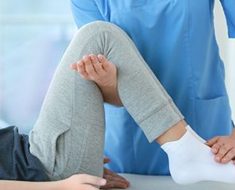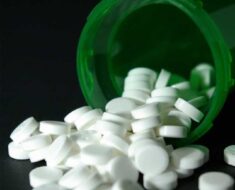
Tuberculosis (TB) continues to be one of the top ten leading causes of death worldwide, with more than 1.3 million reported deaths in 2020. The emergence and spread of drug-resistant forms of the disease have complicated the control of TB in many settings. Adding to the challenge is the fact that treating drug-resistant TB is difficult (the success rate was 57% in 2019), prolonged (treatment can take 9-20 months), and multifaceted (treatment often requires multiple antibiotics that cause severe side effects).
A critical class of antibiotics for the treatment of drug-resistant TB are fluoroquinolones, which form the backbone of most drug-resistant TB regimens. However, strains of TB have evolved to become resistant to fluoroquinolones, undermining the efficacy of treatment regimens that include that class of antibiotic. The best treatment options for patients with drug-resistant TB are ideally determined by using drug-susceptibility tests, which can phenotypically determine the efficacy of antibiotics against a particular TB strain. However, these tests are scarce in low-resource, high-burden settings, meaning that individuals in these regions are unable to receive specialized treatment that can best treat their TB. Furthermore, even if they are available, the phenotypic tests can take up to 12 weeks to provide results.
Reza Yaesoubi, assistant professor of health policy at the Yale School of Public Health, and his team of researchers have been working on models to predict resistance to fluoroquinolones, which could speed up the process of delivering optimal care. Working with national TB data collected in the Republic of Moldova, the team assessed whether demographic and clinical factors could be utilized as predictors of TB resistance to fluoroquinolones. They found that information such as age, geographic location, and whether the TB illness was new or a relapse served as reliable predictors of resistance. From this, they then created a model via machine learning to estimate the probability that the patient is infected with a TB strain that is resistant to fluoroquinolone.
“One of the main advantages of these predictive models is that they can be deployed at the point of care to allow clinicians to optimize the treatment regimen while waiting for the result of drug susceptibility tests, which might take up to 12 weeks,” Yaesoubi said.
Unlike the current strategy for treating drug-resistant TB, which initially assumes susceptibility to fluoroquinolones, Yaesoubi’s model accounts for how individuals’ circumstances influence the likelihood of resistance to fluoroquinolones and when alternative antibiotics (such as delamanid) should be used instead.
Through rigorous analysis and testing, the researchers found that the new model had a statistically higher net benefit in designating the appropriate treatment for patients with drug-resistant TB. These findings promise a system that will allow for better treatment of TB patients, Yaesoubi said. Looking forward, he hopes to expand the model beyond data collected from the Republic of Moldova to include other under-resourced, high-burden regions.
“We are planning to investigate if similar predictive models can be developed for other critical classes of antibiotics and for other countries with a high burden of drug-resistant TB,” he said.
Source: Read Full Article





